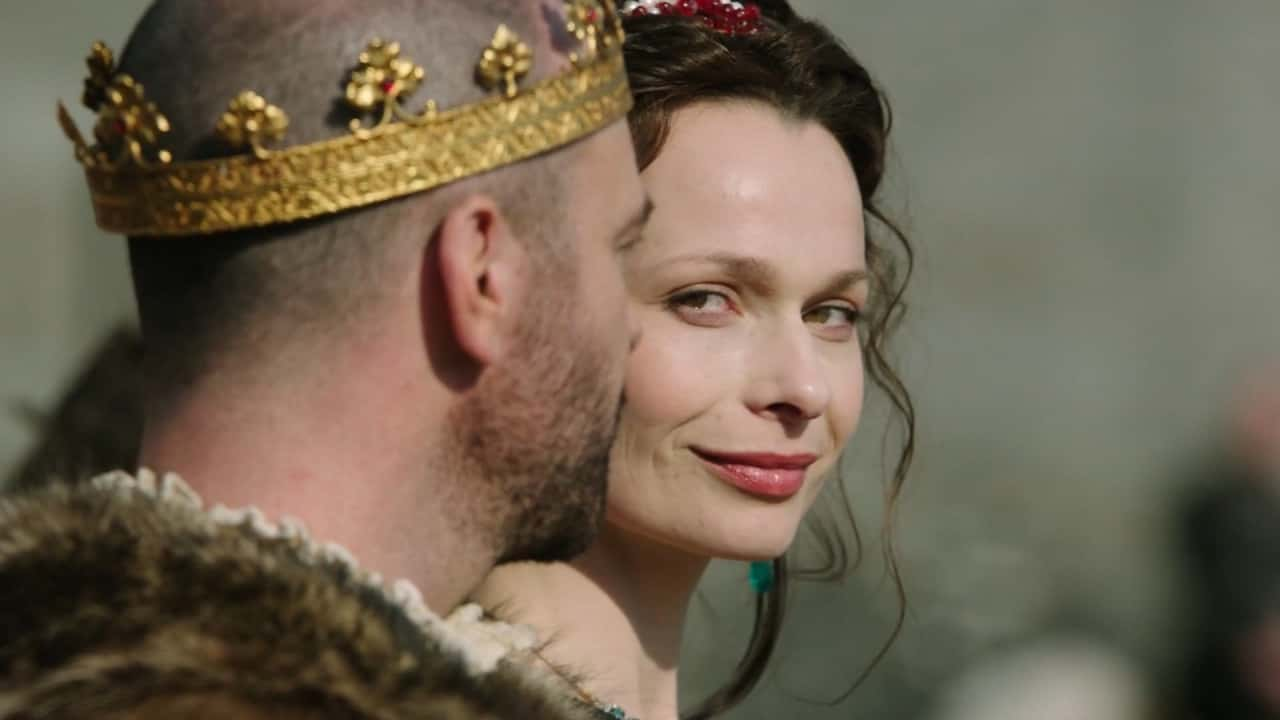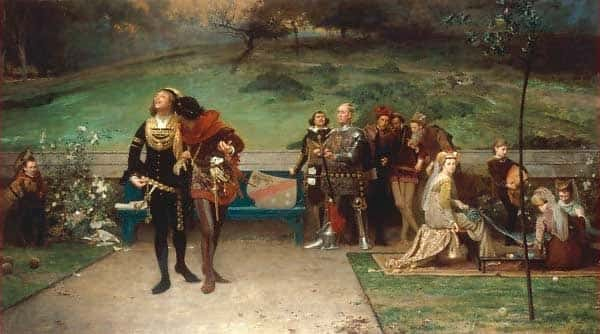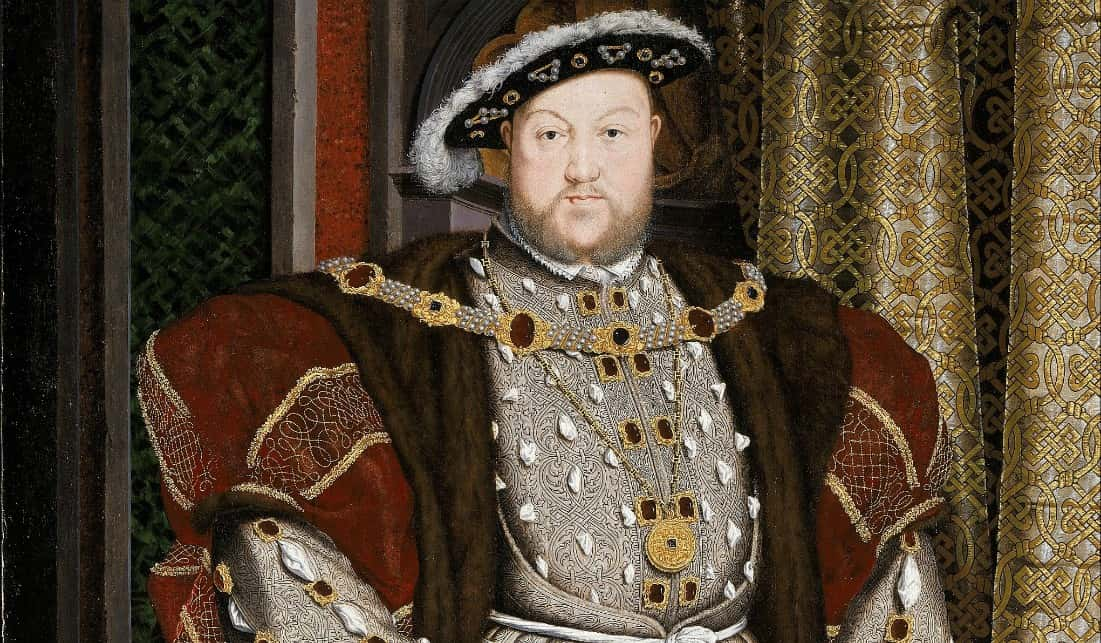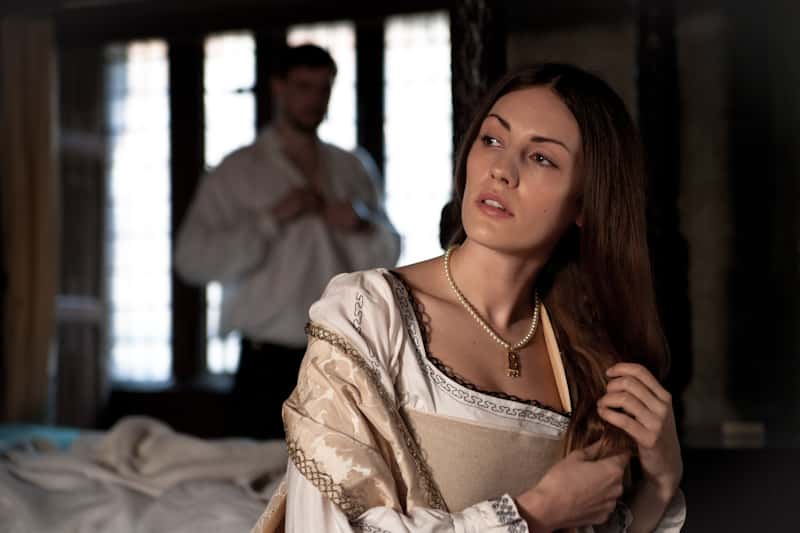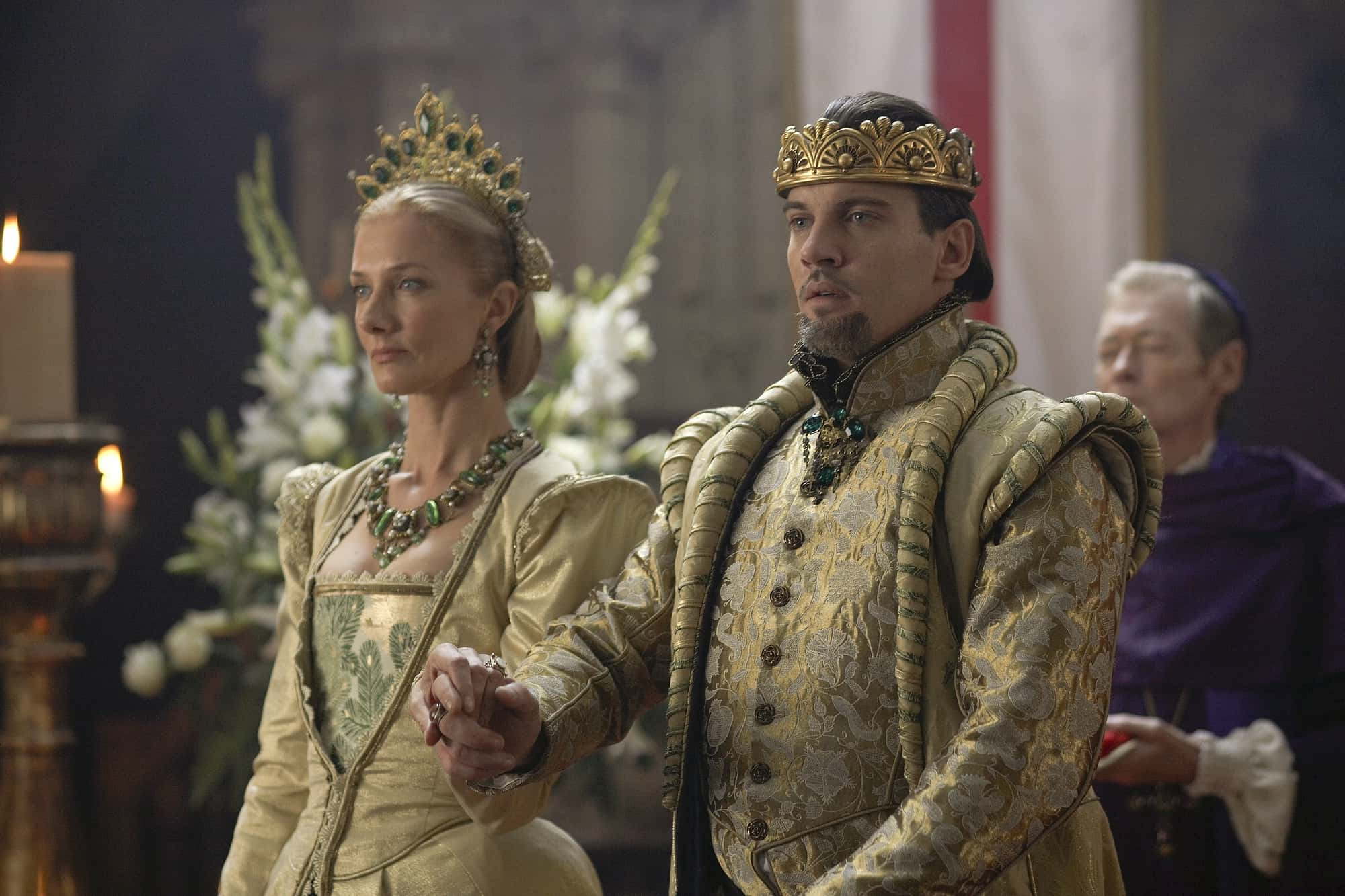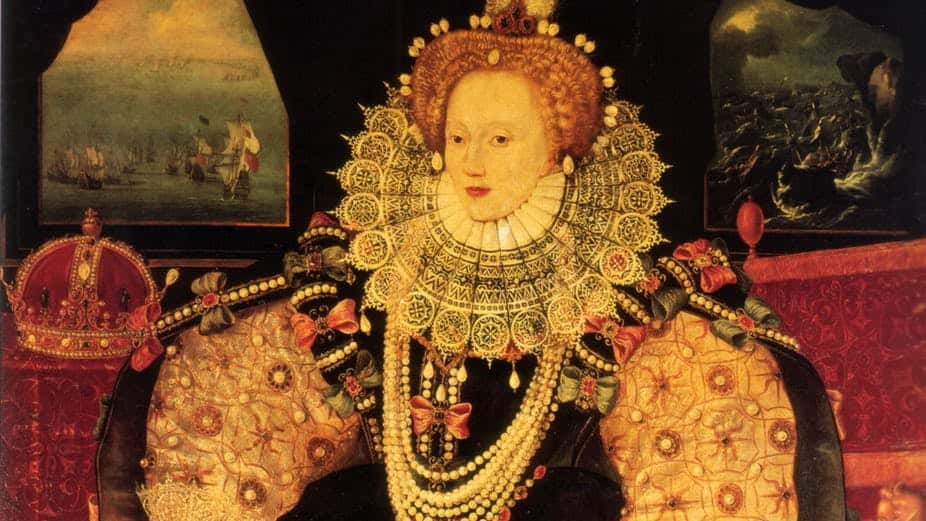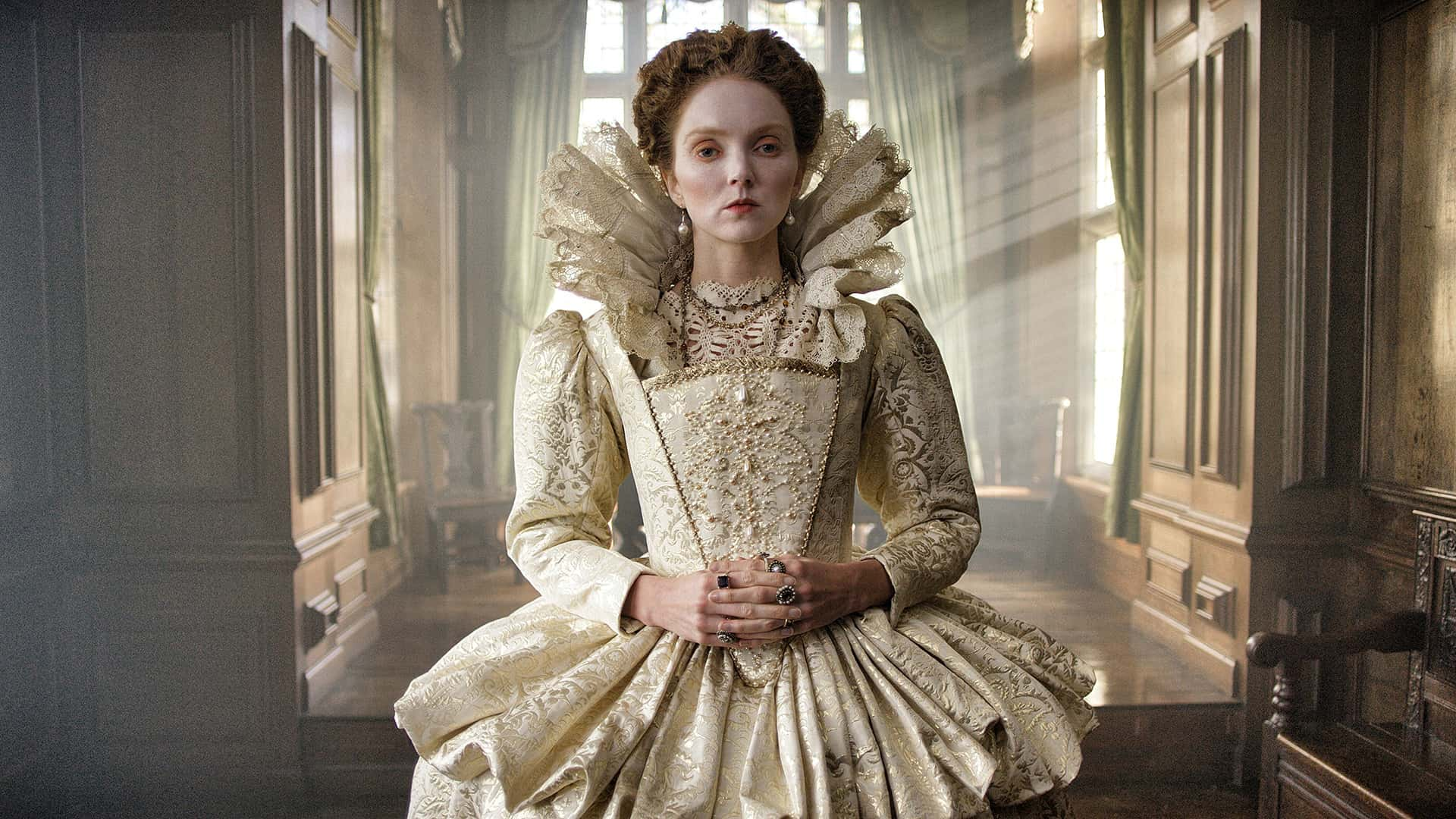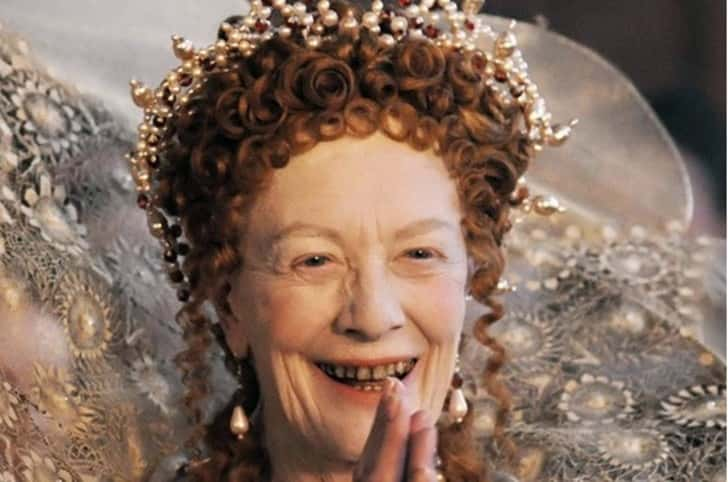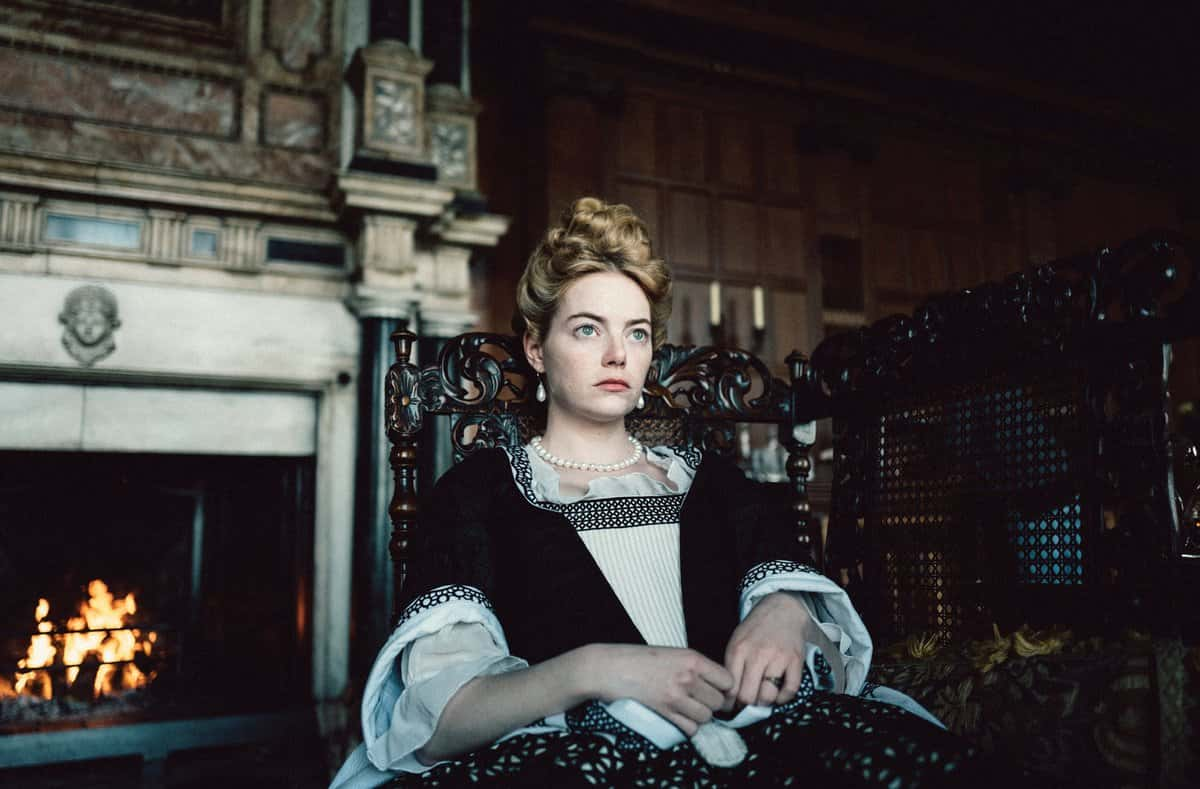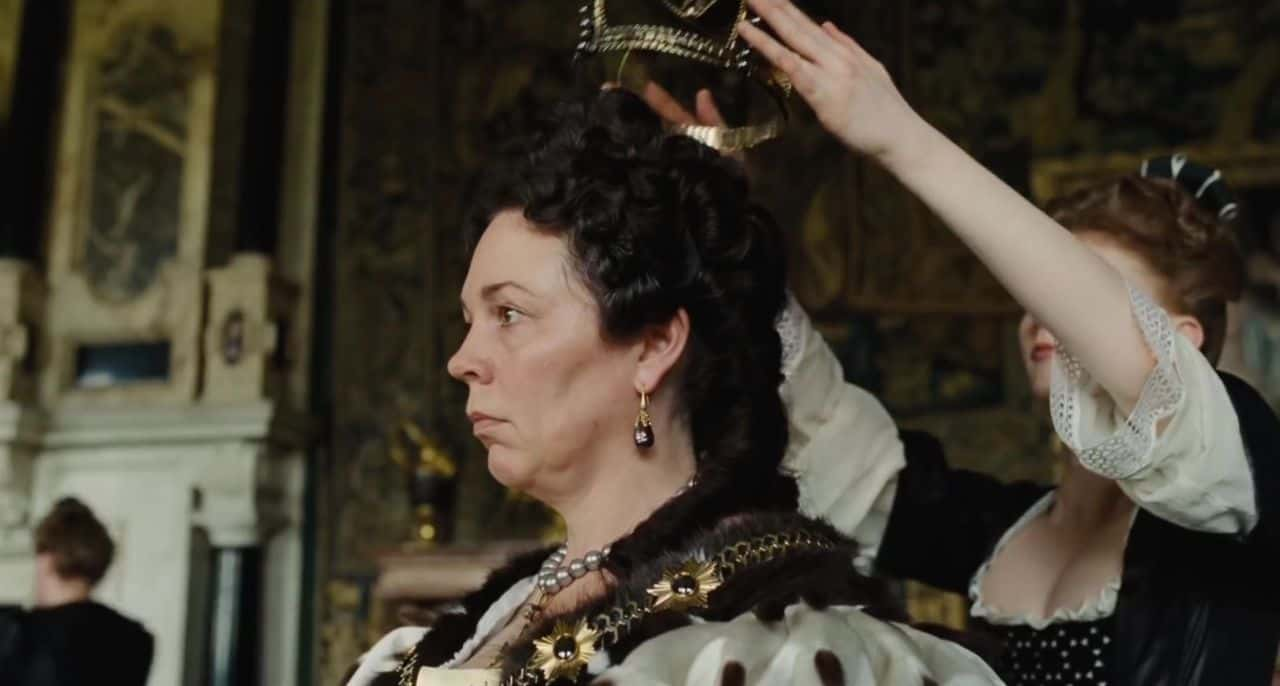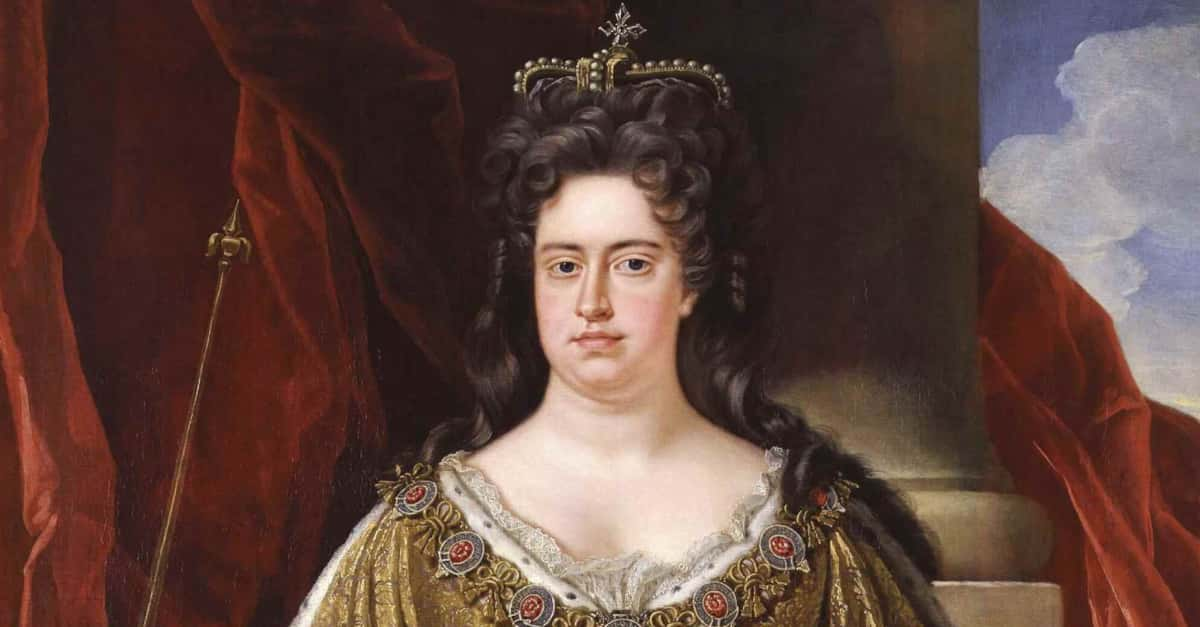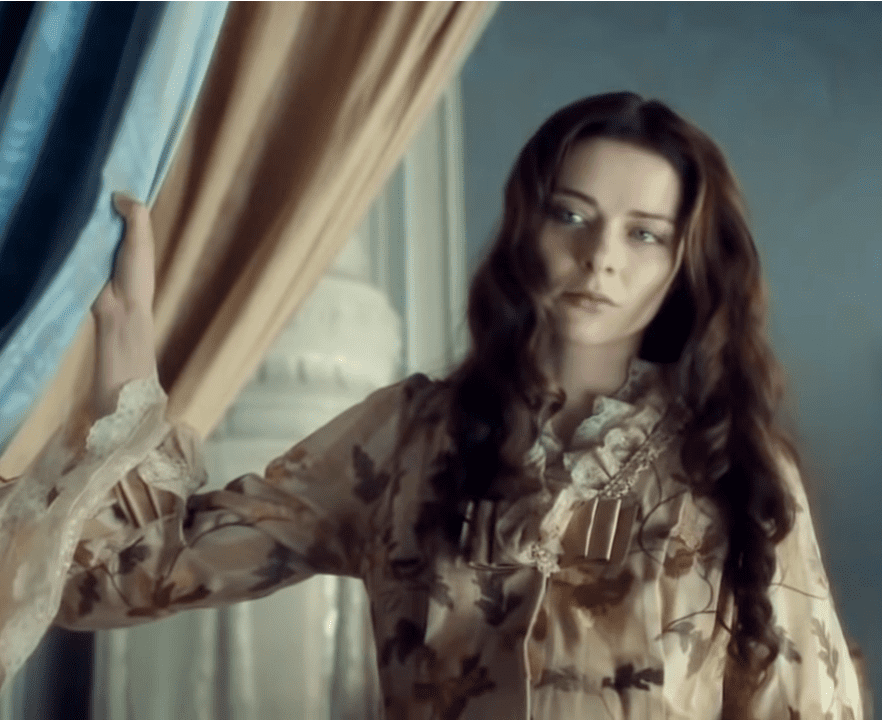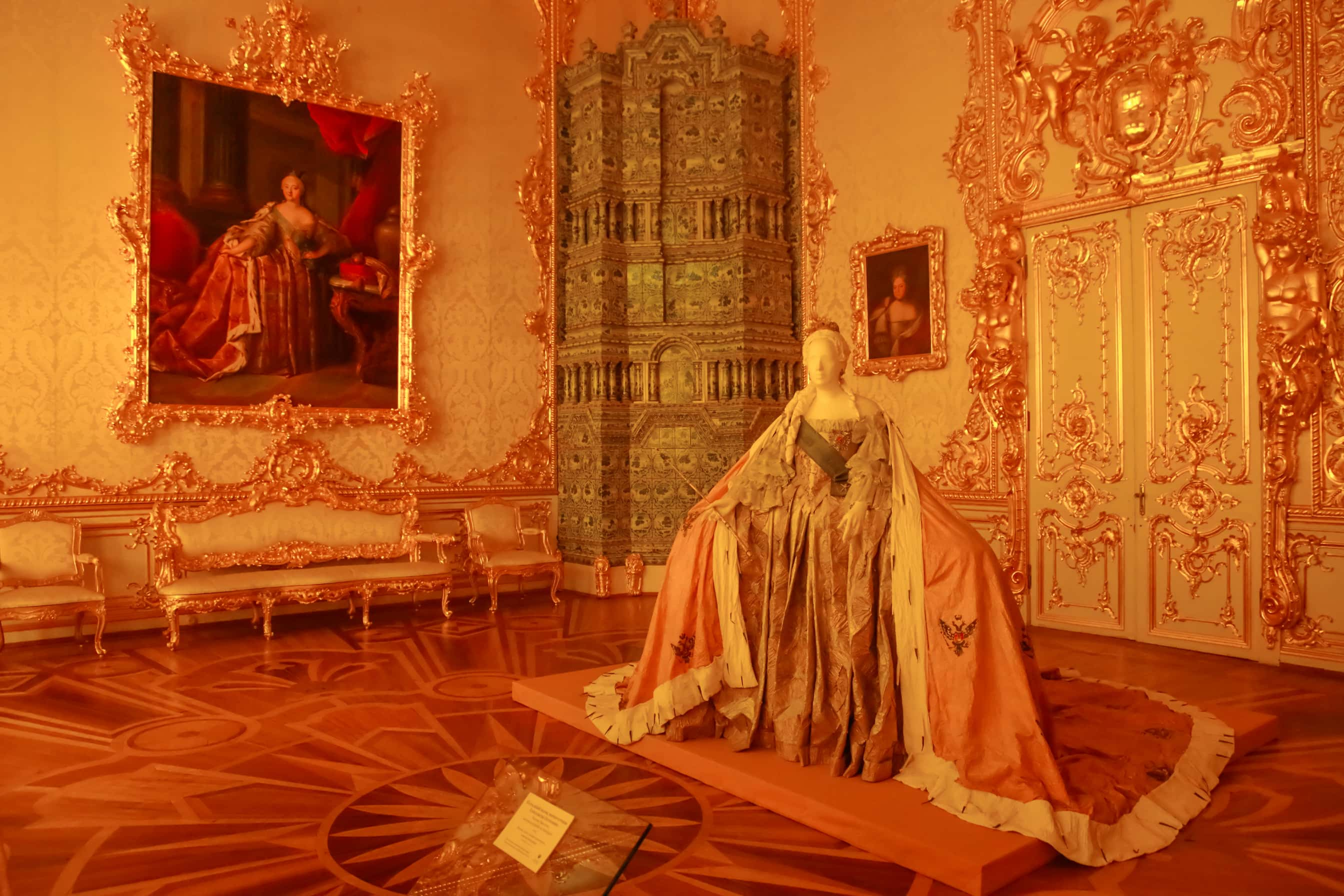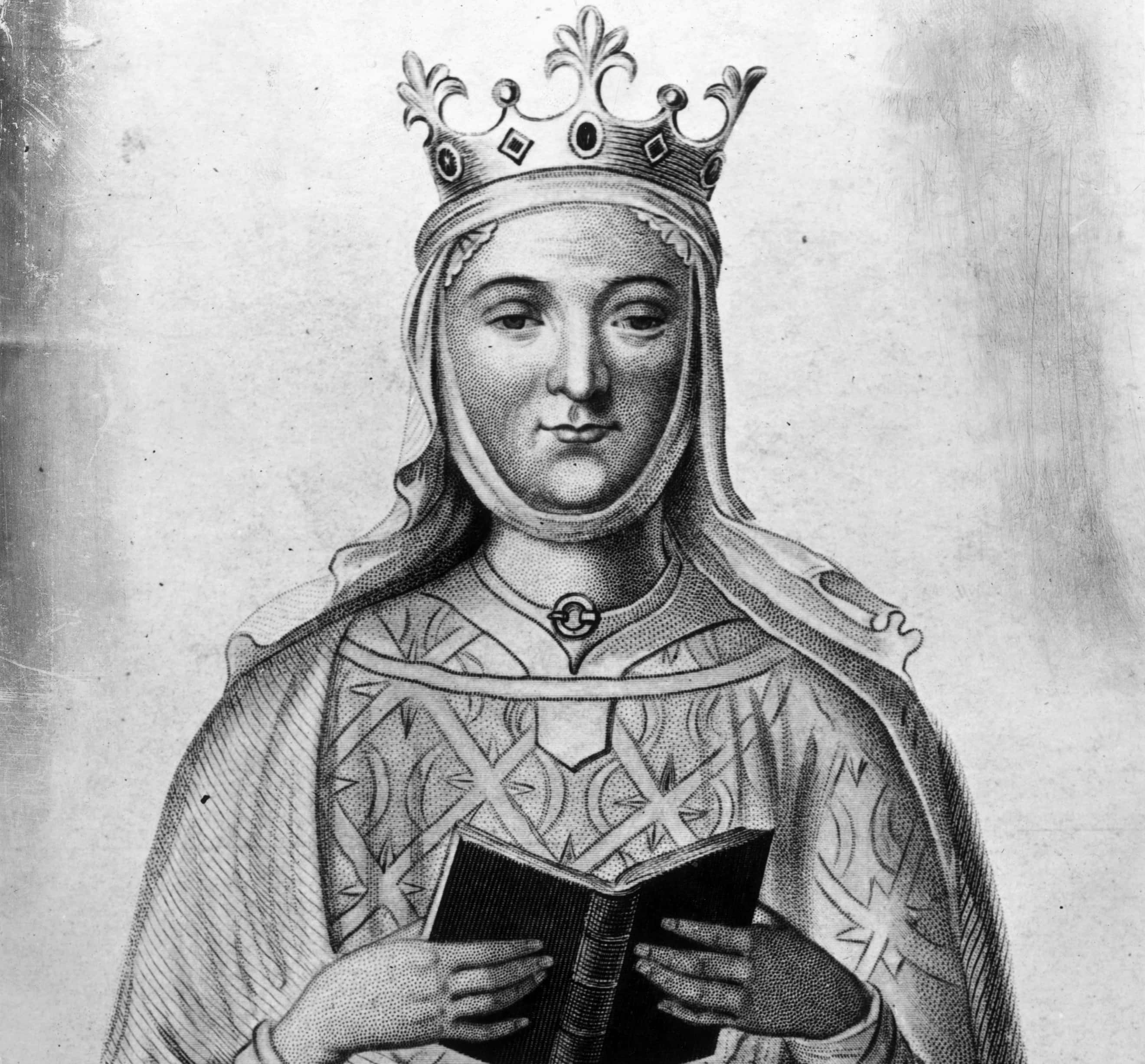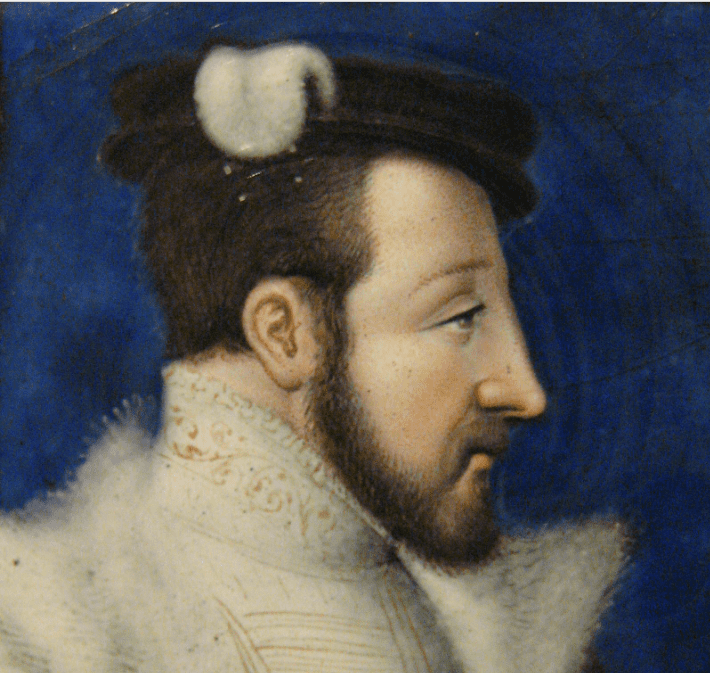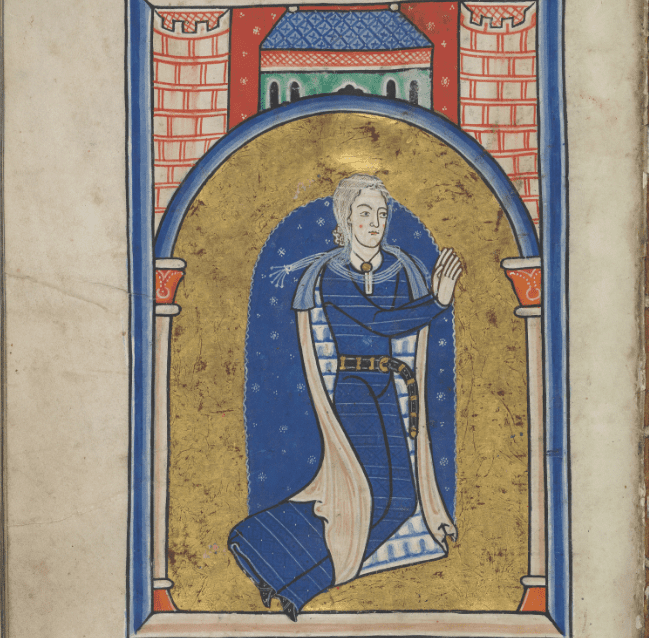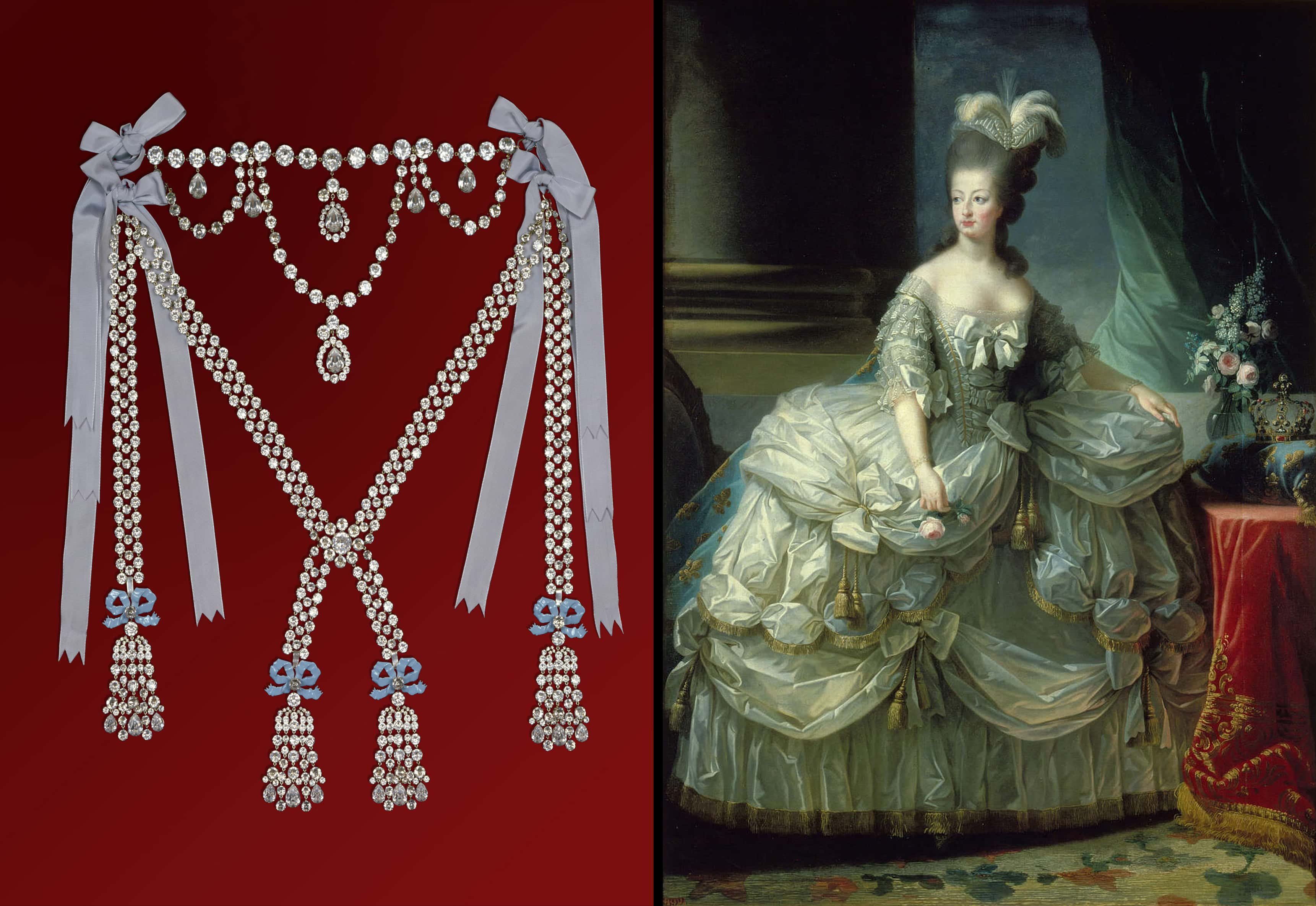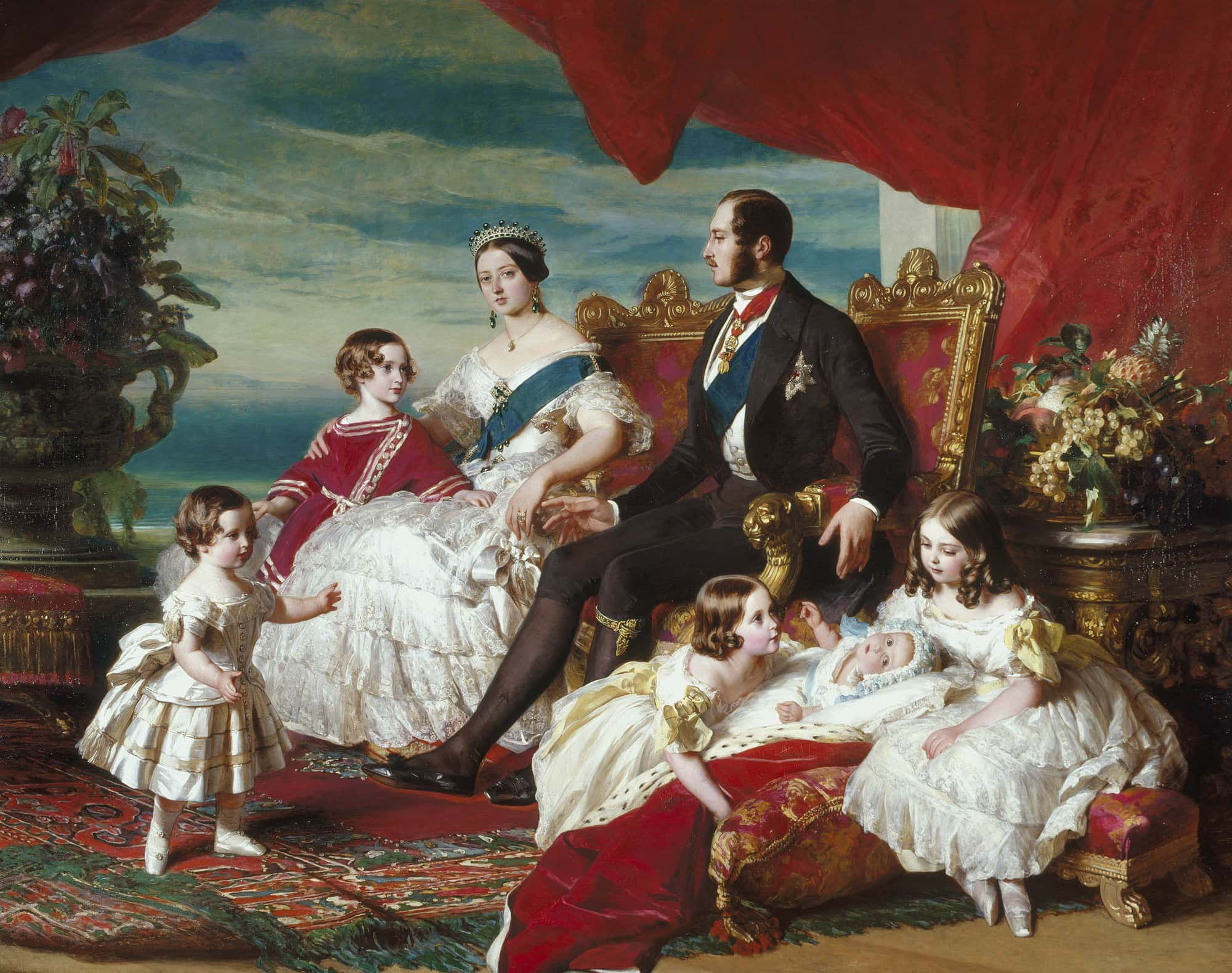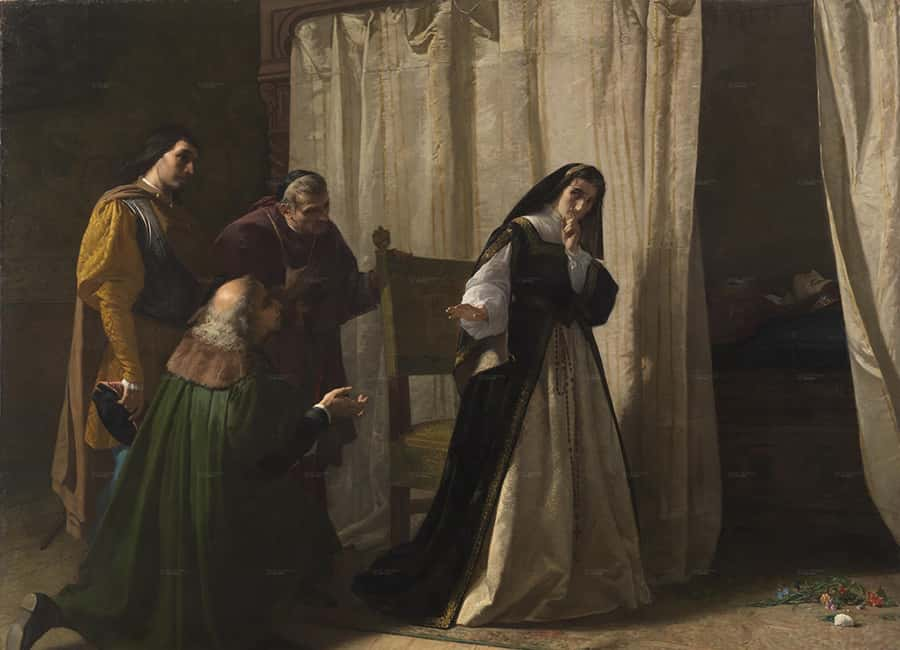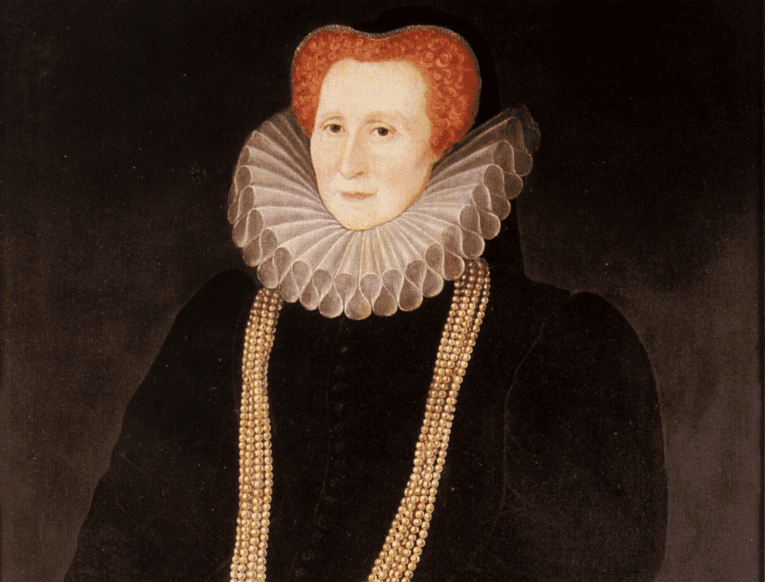Hundreds of years ago, a high-born lady was expected to be a meek companion to her husband, especially if that husband was a king—but not every woman listened. From conniving queens to scheming consorts to rulers in their own right, here are devious facts about the most ruthless queens and empresses in history.
Facts About The Most Ruthless Queens
1. First of Her Name
Empress Wu Zetian was China’s sole female ruler, but her rise would fit in perfectly on Game of Thrones. She started as a concubine of Emperor Gaozong, and eventually gave birth to his child. When the baby died soon after, Wu blamed its death on the reigning empress consort, Empress Wang. But that may not be the full story:
disturbingly, some historians believe that Wu strangled the child herself.
2. Vicious Cycle
Wu has become infamous in the (male) annals of history as a cunning, ruthless woman, especially after she shoved aside her children and declared herself Empress in 690, founding her short-lived "Zhou Dynasty". One source described her as hated by “gods and men alike”.
3. The Mother of All Tragedies
Over a 30-year career, Kösem Sultan rose from slave concubine to Regent of the Ottoman Empire. Unfortunately, she lost practically every close male family member on the way there.
She lived through the reigns of six sultans, and survived every single one but the last. After Kösem was assassinated by her own daughter-in-law in 1651, the people fittingly called the long-serving, long-surviving queen their "Vālide-i Maḳtūle," or murdered mother.
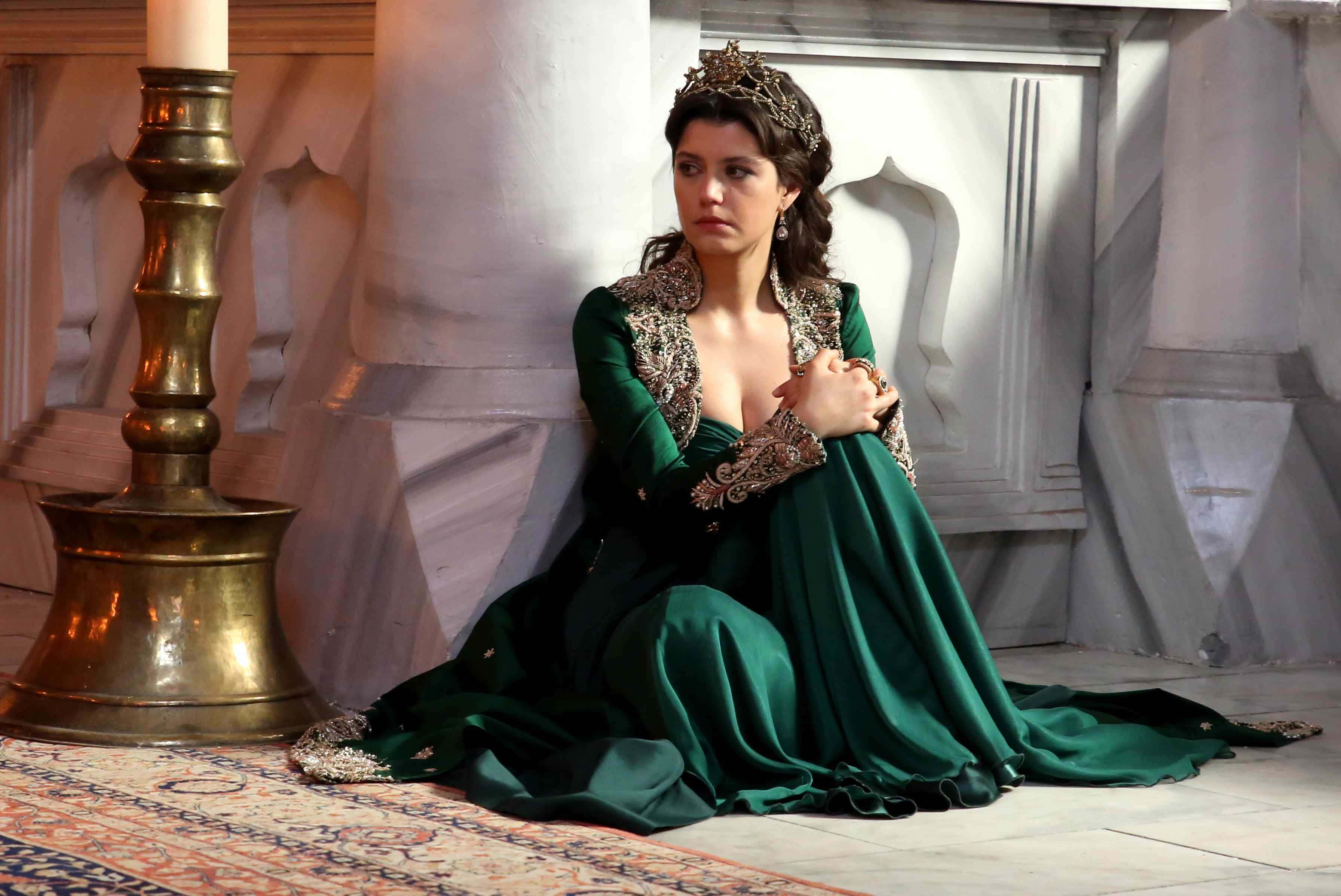 bg-mamma
bg-mamma
4. Oh, Boy!
Queen Christina of Sweden’s mother was never shy about her disappointment in the gender of her only child. Maria of Brandenburg was desperate to give her husband a son, so when presented with the baby girl Christina, Maria rather tastefully screamed, “Instead of a son, I am given a daughter, dark and ugly, with a great nose and black eyes. Take her from me, I will not have such a monster”! Maria would then “accidentally” almost kill Christina several times by dropping her or pushing her down the stairs; she even made the girl sleep under the rotting heart of her dead father.
 pinterest
pinterest
5. No Visitors Allowed
For decades, Henri II of France embarked on a lifelong love affair with his mistress Diane de Poitiers.
Even on his deathbed from a tragic jousting accident, Henri begged to see her. His wife, Queen Catherine de Medici, was less than sympathetic to his final pleas, and refused Diane entry to his room. He died without Diane at his side, and Catherine exiled Diane to a distant obscurity.
6. Thanks, Diane
Catherine de Medici’s husband was so enthralled by Diane de Poitiers, in fact, that it was Poitiers who had to remind Henri of his royal baby-making “duties,” and bid him to spend more (re)productive time with his wife. You know you're doing something wrong when your mistress starts telling you to sleep with your wife.
7. Hear Me Howl
When Isabella, the “She-Wolf” of France was approximately three years old, she became engaged to the future King Edward II of England, and they were eventually married in 1308. Though known for her beauty, intelligence, and diplomacy, she was most infamous for her role in having her own husband dethroned.
8. The King’s Favorite
The marriage between Edward II and Isabella never stood a chance, because Edward was already in love with someone else. Edward met Piers Gaveston when they were just teenagers, and it was supposedly love at first sight. At his wedding to Isabella, Edward even gave Gaveston some of the jewels from his wife’s dowry and sat with Gaveston, not Isabella, at the festivities.
9. The Queen’s Lover
With the way things were going between Isabella and Edward, it’s not surprising that she ended up falling into the arms of Roger Mortimer—an English knight. Isabella raised an army with her new sidepiece and launched an attack on England, i.
e.on her own husband, Edward II. Now if that's not ruthless, I don't know what is.

Sign up to our newsletter.
History’s most fascinating stories and darkest secrets, delivered to your inbox daily. Making distraction rewarding since 2017.
10. A Price on Her Head
Isabella's husband Edward was naturally ticked off, and allegedly offered a reward for the deaths of the two lovebirds, but Isabella responded in kind by offering twice as much money for the death of one of Edward's allies.
 Public Domain Pictures
Public Domain Pictures
11. Not Much of a Fight
The battle against Edward II turned out not to be much of a battle, and he was captured and forced to abdicate in favor of his son, the newly-minted Edward III. But the people soon found out just how cruel Isabella was, and support for her and Mortimer quickly dwindled.
Eventually, Edward III had Mortimer executed, but showed mommy dearest Isabella some leniency and spared her life. Nonetheless, he kept her powerless until her death.
12. I See Dead People
Queen Maria I of Portugal was already a bit bonkers, but after the death of her husband/uncle (...yeah) in 1786, and her son and daughter shortly afterwards, she really lost her mind.
A religious fanatic, she became convinced she was going to hell, and saw visions of her dead father’s blackened corpse being tortured by demons. Her visitors complained that she screamed and wailed too much. Everything in moderation.
13. Villainess
The Wars of the Roses were a truly bloody time in English history. Two branches of the Plantagenet kings, known as the House of York and the House of Lancaster, tore English society apart with their brutal game of thrones.
It’s hard to find a real out-and-out villain of the event, but one person who ended up on the wrong side of history would have to be Queen Margaret of Anjou.
14. Long Live the Queen
Margaret was crowned Queen Consort of Henry VI on May 30, 1445. She was only 15 years old, eight years younger than her husband.
Despite the need for a male heir to the king, Margaret and Henry VI didn’t have their only child, Edward, until October 1453, more than eight years after their wedding.
15. Could You Say He Was the King’s Hand?
Even at the time of their son’s birth, Henry VI was suffering mental breakdowns and exhibiting signs of a deteriorating mental state, which left him unfit to rule. As a result, Richard of York, a relative of the king, was appointed Lord Protector.
However, Margaret wanted that power for her and her son, and she entered into the Wars of the Roses to get it.
16. Someone Call Maury!
Because of Henry VI’s madness, many believed that Margaret’s son Edward was actually fathered by another man.
17. Margaret Lannister
The Wars of the Roses would famously provide a lot of inspiration for writer George R.
R. Martin to create the Song of Ice and Fire series, which was adapted by HBO into Game of Thrones. Many have noted that the character of Cersei Lannister shares a lot in common with the historical Margaret.
Like Margaret, Cersei is rumored to have fathered her children with another man rather than her royal husband, though in Cersei’s case, that rumor is indisputably true. Also like Margaret, Cersei was fiercely devoted to her children, and gained a reputation for deceit.
18. Good Knight
Elizabeth Woodville is considered the first common-born Queen of England, and she was also a key power player in the Wars of the Roses. In truth, though, Woodville wasn't really a “peasant” queen. On her father’s side, she was descended from knights, sheriffs, and members of Parliament. This was nothing to turn your nose at, but it was hardly the pedigree the people expected from a girl who would become a king’s wife.
19. England’s Next Top Model: 1464
Woodville’s beauty was heavily praised in both her time and ours. Historians often cite a quote saying she possessed “heavy-lidded eyes like those of a dragon,” which might say something about medieval beauty standards. Unfortunately, there is no evidence to suggest this quote comes from a contemporary source.
Nevertheless, most agreed Woodville was hot stuff.
20. When the Tinder Is an Oak
How does a single mom meet a guy who will treat her like a queen? Before dating apps, there was (according to some legends) standing under an oak tree on the side road and waiting for her future husband King Edward IV to ride by.
In this retelling, Woodville used her charms to catch the newly-crowned Edward’s attention and restore her late husband's lands for her sons.
21. He Didn’t Get the Royal Memo
Woodville’s marriage threw a wrench in Edward IV’s familial alliances. For one, his friendship with Richard Neville, aka the “Kingmaker,” never recovered. Neville was in the midst of contracting a marriage for his ruler, and Edward took his sweet time in telling Neville he had eloped with Woodville.
The Kingmaker would forever hold a grudge against both his liege and Woodville herself, and in 1470 he briefly overthrew Edward, causing him to flee England.
22. Ill-Timed Delivery
There was one big problem with Edward's desertion: Woodville was heavily pregnant with their child and had to stay behind. While hiding in Westminster Abbey, Elizabeth gave birth to her first royal prince, the future Edward V.
It was hardly a royal birthing room, but it would have to do.
23. The Princes in the Tower
A reinstated King Edward IV died of ambiguous circumstances in April 1483, which left Elizabeth Woodville a widow and single mom to their children. But more tragedy was around the corner, and Woodville will now always live in the shadow of her elder sons’ uncertain fate.
When King Edward first died, Elizabeth's sons Edward V and Richard were taken into custody in preparation for the young Edward’s coronation. Unfortunately, the festivities would be postponed indefinitely, as Richard III seized the vulnerable throne.
After the summer of 1483, there would be no more sightings of Woodville’s sons, and the lost boys are now known to history as the tragic “Princes in the Tower”.
24. Playing the Game of Thrones
Lady Margaret Beaufort is the stuff of historical novelist dreams. As a child during the Wars of the Roses, she gave birth to a child herself:
Henry VII, who would begin the all-new Tudor Dynasty. Over the next five decades, Margaret proved to be her son’s best advocate and a political powerbroker in her own right. From her perilous childhood to her adult courtly schemes, there was often little difference between her life and an episode of Game of Thrones.
25. Teen Mom OG (Original Gentlewoman)
At the time of Margaret's marriage to Edmund Tudor on November 1, 1455, she was only 12 years old; the groom was twice her age at 24.
Just one year into the marriage, Margaret Beaufort became a widow after Edmund died of the plague. Not a good way to go—but even worse, the 13-year-old Margaret was very pregnant with their child, the future King Henry VII.
26. Closed for Business
Margaret's labor was intensely dangerous, as she was very young and very small.
By sheer luck, both she and her child survived, but although she had many marriages after this, she never went through the ordeal of birth again.
27. A Royal Mouthful
As she was never a “Queen” herself, Margaret Beaufort could not be titled a “Queen Mother”. Instead, when he became King, Henry VII gave his mom the specially-made title of “My Lady the King’s Mother”. Say that three times fast.
28. Mother-in-Swag
Margaret wore clothes of the same quality as her son's wife, Queen Elizabeth of York. Likewise, Margaret walked only a half-pace behind Elizabeth. Before you go “So what”? remember that Margaret technically ranked below Elizabeth in her son’s court, having never been a queen herself. From anyone else, such conduct would have been flagrantly rude.
Margaret Beaufort, of course, was not “anyone else”.
29. The Life of the Party for Now
The last family events that Margaret witnessed in her eventful life were the wedding of her grandson Henry VIII to Catherine of Aragon, and the couple’s joint coronation. In fact, she died just one day after Henry VIII's 18th birthday—almost as if she were waiting for the last Tudor male to be a majority-age king in his own right before she retired forever. You see, Margaret Beaufort did not leave loose ends.
30. Obsession
As we all know now, Henry VIII was consumed by his desire to father a son—something that proved famously difficult for him. Catherine of Aragon bore Henry six children, including two sons, but all but one of those children—the future Queen Mary—died in infancy. Henry and Catherine’s inability to produce offspring caused major problems in their marriage, and Henry eventually divorced Catherine, leaving her for Anne Boleyn.
31. A Family Affair
It’s widely known that before he married Anne Boleyn, Henry VIII carried out a long affair with Anne’s sister, Mary. Less famously—though more luridly—Henry was said to have also slept with Anne’s mother, Elizabeth.
32. No Love Lost
Anne Boleyn showed disdain for her predecessor, Catherine of Aragon.
She refused to attend Catherine’s funeral, prevented Catherine’s daughter Mary from attending, and spent the day parading around the castle in bright yellow. Rumors spread that Anne had threatened to murder Catherine and Mary, and Catherine’s death led many to suggest that Anne had finally made good on her promise.
33. Mock Trial
No fewer than seven men were accused of carrying out affairs with Anne Boleyn, among them the poet Sir Thomas Wyatt, Henry’s friend Henry Norris, and Anne’s own brother, George. Virtually all denied the allegations but confessed under torture.
Those coerced confessions were enough to have Anne condemned to death for adultery, treason, and incest.
Modern historians agree that the charges brought against Anne Boleyn that led to her execution were false and unconvincing, and that Henry had her killed just because she, like his previous wife Catherine of Aragon, didn’t happen to have any male children.
34. That Didn’t Take Long
The day after Anne Boleyn’s beheading, Henry got engaged to Jane Seymour, Anne Boleyn’s lady-in-waiting. While she was publicly proclaimed queen, her coronation never went ahead due to an outbreak of plague.
 pinterest
pinterest
35. Frenemies
Jane was not only Anne Boleyn’s lady-in-waiting, she was also Anne’s second cousin. The two women had been close friends at Henry’s court until Anne noticed the necklace Jane wore. It featured a small portrait of Jane’s lover—Henry VIII. Anne angrily snatched the necklace from Jane’s hand, leading to what modern witnesses would probably describe as a “catfight”.
36. The One?
In 1537, to Henry’s great relief, Jane became pregnant with a son. Sadly, Seymour died of complications shortly after giving birth to the future Edward VI.
She remained the only one of Henry’s wives to be given a royal burial, and Henry was buried beside her upon his death in 1547.
37. Sons Before Moms
But the question now remains: was Jane the one, or was it the son? During her difficult and ultimately fatal labor, doctors came to Henry and asked him if they should cut Jane open to save the child.
Henry's response was, "Save the life of the child, for another wife can easily be found". Ouch.
 Wikimedia Commons Jane Seymour and Edward VI
Wikimedia Commons Jane Seymour and Edward VI
38. How Shallow
Ever been on a Tinder date with someone who looks nothing like their profile pic? Henry VIII feels your pain. He saw a commissioned portrait of Anne of Cleves and was smitten.
He didn’t meet her face-to-face until after the marriage had been arranged, and later complained to a friend, “She is nothing so fair as she hath been reported”. As we'll find out, that may not have been the whole story...
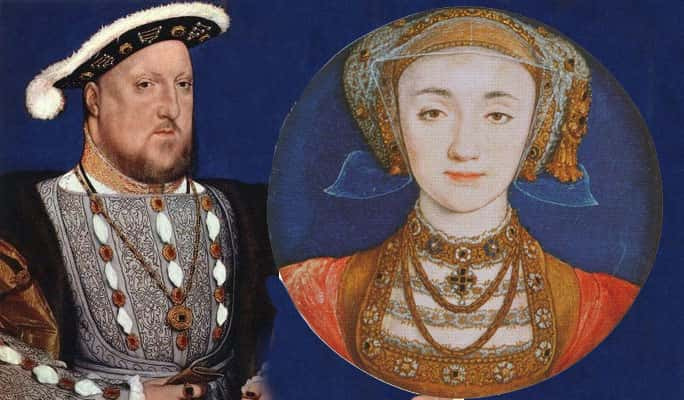 salonurody
salonurody
39. No Hard Feelings
Henry’s marriage to Anne was quickly annulled—a process made much easier by Anne’s claim that the marriage was never consummated. Whether that was true or not, Henry gave Anne two houses and an allowance for her cooperation, and she would go on to live the longest of any of Henry’s wives.
40. It Runs in the Family
After Anne of Cleves comes Catherine Howard.
A cousin of Anne Boleyn, Catherine Howard was married to Henry VIII little more than a year before her death. Like her cousin before her, Catherine Howard was sentenced to death and beheaded for her alleged affair with a man named Thomas Culpeper.
 allocine
allocine
41. Wife Number Six
Twice-widowed Catherine Parr married Henry VIII on July 12, 1543.
Though she survived him, few people know that she almost lost her life as well. Henry once suspected her of radical religious beliefs, and even had a warrant for her arrest. But Catherine was lucky; somehow, the warrant managed to fall conveniently outside her door, perhaps planted by an ally.
With this precious information, she was able to confront Henry and sweet-talk him into calling her trial (and almost certain execution) off.
42. A Tithe of Troubles
Although she only reigned for five years, Henry VIII's daughter "Bloody Mary" was a busy Queen. As she attempted to reverse Protestant reforms, Mary had over 280 dissenters of the Catholic Church burned at the stake, earning her the terrifying nickname by which we know her.
 thissideofthetruth - WordPress
thissideofthetruth - WordPress
43. Devoted Husband
In the summer of 1554, the English court was bracing for news of Mary’s first child. Mary started to show signs of a pregnancy months earlier, and everyone was taking precautions for the next heir to the throne. Her husband King Philip was possibly even planning to marry Mary’s half-sister Elizabeth in the event that his wife died in childbirth (he was a real stand-up guy). There was just one problem.
..
44. False Alarm
Mary wasn’t actually pregnant at all. Perhaps for psychological reasons, she had a rare case of false pregnancy. Tragically, it would not even be her last. During one them, Mary was so convinced that she was with child that she had letters drafted announcing the birth of her heir. They would never be needed.
45. All Men Must Die
Mary died, childless, in 1558 during an influenza epidemic. However, the reasons for Mary’s death are not totally clear. Some accounts suggest she succumbed to the influenza outbreak, while others suggest she died of cancer, and that her false pregnancies were actually the result of a tumor.
46. Buried Facts
Mary has become somewhat overshadowed in history by the reign of her sister Elizabeth I, who took over the throne when Mary died. So much so that James I, who was Elizabeth’s successor, actually placed Elizabeth’s coffin on top of Mary’s in Westminster Abbey. He then erected a large monument in praise of Elizabeth’s reign, and it only had a small inscription to Mary. That’s just cold.
47. Single and Ready to Mingle
Once Mary died, her widower Philip started trying to marry her sister Elizabeth, just as he had planned when he worried Mary might die in childbirth.
Elizabeth was having none of it, however, and rejected the proposal.
48. Virgin Queen
Despite her long rein and eligibility, Elizabeth I never married. She entertained many suitors, including many foreign royals and other high ranking men in court, but, to her council's despair, she refused to wed and never named an heir.
According to her, she was married to England—and this wise move was probably what kept her in power for so long.
 Getty Images
Getty Images
49. It's All Looks
Elizabeth I was careful to present her best self. This meant wearing heavy makeup made of lead and vinegar, which probably did more damage to her smallpox-scarred skin than it helped it.
An older Elizabeth I, sensitive about her looks, once felt intruded upon when a courtier entered her chambers before she had been made up for the day. As punishment, she put him under house arrest.
50. Early Dentures
Despite her focus on beauty, dental standards at the time meant that as she grew older, Elizabeth I lost many teeth.
To counteract the resulting sunken cheeks, she was said to stuff them with cloth when in public.
51. Fighting With My Family
Mary, Queen of Scots is most notorious for plotting against her cousin Queen Elizabeth I to steal the throne, which ended up resulting in her execution in 1587 at age 44. Interestingly, during their long and tumultuous relationship, Elizabeth I and Mary never actually met in person.
52. Protecting Their Asset
In 1543, the English King Henry VIII started plotting to marry his heir to Mary, but when Scotland refused, he took other, darker measures. He began attacking Scotland in what became known as the "rough wooing" to get the Scottish crown to submit to the union. However, Mary’s mother was no fool, and she sent her daughter to be educated in France and primed for marriage to the French Crown Prince, Francis, instead.
53. Premature Death
In 1559, Francis and Mary became the King and Queen of France.
Their reign didn’t last long, however. Francis was always sickly, and less than two years after he took the throne, he collapsed from a temporary stoppage of oxygen to the brain and died a few weeks later, apparently from an ear condition.
 Pinterest
Pinterest
54. Looked Good on Paper
Mary’s second marriage was one of her choosing, but that still didn’t leave her free to pick just anyone. She strategically chose her handsome cousin Henry Stuart, Lord Darnley, who had the right background and a genuine claim to both the English and Scottish thrones.
These were about his only plusses, though, and he turned out to be an arrogant scoundrel and a drunk. Still, Mary had the hots for him: she once called him the "lustiest and best proportioned man" she knew.
55. Jealous Husband
In addition to being a drunk, Darnley was also a jealous idiot, and he really didn’t like how much influence Mary’s secretary David Rizzio seemed to have over her. Unable to stand it any longer, he arranged for men to rush into Mary’s private rooms, where they murdered Rizzio in front of a pregnant Mary and her ladies-in-waiting.
56. Boom!
Darnley, however, got what was coming to him, and then some.
In the early morning of February 10, 1567, two large and loud explosions almost reduced Kirk o’ Field, near the Scottish Royal estates, to dust. A later investigation of the explosion revealed that two barrels of gunpowder had been hidden under Lord Darnley’s bedroom. These definitely should have killed him—but his body wasn’t found in the rubble.
Instead, a soldier found his body, along with the body of his valet, on the grounds.
He was obviously strangled to death and very much not blown up. Oddly, they were surrounded by a cloak, a dagger, a chair, and a coat, and Darnley was only in his nightshirt, as if he had fled his rooms. A lot of people had cause to want Darnley dead, including Mary and her next husband the Earl of Bothwell, but the identity of the killer(s) officially remains a mystery.
57. A Horrible Death
Although Mary was eventually beheaded, beheading was a walk in the park compared to the fate of her third husband the Earl of Bothwell—but he may have thoroughly deserved it. After the suspicious death of Mary's second husband, Bothwell, according to some sources, took Queen Mary by force, imprisoned her, and then married her.
The obviously super-upstanding Bothwell ended up fleeing the country when people got wind of the kidnapping, and wound up imprisoned in the Danish fortress of Dragsholm. During his ten long years in prison, he was chained to a pillar short enough to prevent him from fully standing up, and was kept in the dark in his own dirt and grime.
He apparently died insane and covered in hair.
 Google News
Google News
58. Marrying a Murderer
When Mary's unpopular, possibly forced marriage to Bothwell backfired and caused him to flee, it also backfired on the Queen herself. You see, forced or not, Scotland was none too happy that she had married a suspect in her late husband's murder, and they also suspected she had been having an affair with Bothwell.
Within weeks, the lords turned against her, forced her to abdicate, and imprisoned her.
59. Not a Warm Welcome
Mary ended up escaping her prison and fled to England, hoping that Queen Elizabeth I would throw her support behind her and help her take back her Scottish crown. Elizabeth had a different idea in mind, however, and instead of welcoming her, she decided to lock her up, keeping her imprisoned in multiple remote castles across England for 20 years.
60. Assassination Plot
In 1586, a plot was hatched to assassinate Queen Elizabeth I and to place Mary on the English throne. Mary might have been able to feign innocence, seeing as she was imprisoned, but a letter sent by Mary while in prison revealed that she authorized the assassination all the same. It sealed her fate, and she was sentenced to death.
61. Poor Execution
Mary's execution wasn’t a clean one. When the executioner took his first swing, he missed, and it hit her in the back of the head. He swung again, but the head hung on. Finally, on the third swing, he managed to get the job done. But the humiliation wasn't over:
He reportedly held the head up by its tresses and said, "God save the Queen," but it turned out that Mary had been wearing a wig. The head toppled to the ground, revealing short grey hair. One eyewitness account also added that Mary's lips kept moving in the minutes after her beheading.
62. Queen’s Best Friend
Mary’s dog, a Maltese terrier, remained loyal to her through the execution, and the executioner later discovered him hiding under her dress. No matter how hard he tried to chase him off, the dog refused to leave his mistress and reportedly lay down in a puddle of her blood.
63. Best Friends Forever
Queen Anne of England was the first ruler of the newly unified Great Britain. However, she was wracked with illness and insecurity, and often depended on her best friend, Sarah Churchill, to make important decisions. For many, Sarah was the one who secretly ruled the direction of the country when Anne was queen.
64. The Pretender
Anne courted a bit of a nasty love triangle when she allowed a lowly maid, Abigail Masham, to become a close acquaintance—a position that Sarah Churchill felt was hers and hers alone. Sarah was so upset with Anne’s closeness to Abigail that she was the only person in the court not to wear mourning dress when Anne’s husband died.
65. Guess What I Heard
From the beginning, Queen Anne was something of a gossip.
And she also detested the Catholic Church. Put those two together and you have a potent cocktail. When Mary of Modena, King James’ Catholic wife, became pregnant, Anne started a rumor that she was faking the pregnancy. Mary, Anne whispered, was going to swap in a fake son at the last minute to ensure a Catholic lineage to the throne of England.
This, of course, was not true.
66. No Doubt A-Gout It
Anne struggled for good health almost her entire life, so it was almost fitting that she was not feeling her best during her coronation. At the time she was crowned Queen, Anne was suffering from an attack of gout. She had to be carried to the throne in an open sedan chair that had a low enough back to allow her six-yard-long train to reach her ladies behind her.
67. The Final Square off
Afflicted with gout and dropsy, Queen Anne could barely walk by the last years of her life. Her body was so bloated, her royal coffin was shaped like a square.
68. That's Not My Name
Catherine the Great was born Sophie von Anhalt-Zerbst to an insolvent Prussian Prince. She changed her name to Ekaterina (Catherine) when she converted to Russian Orthodoxy immediately prior to her marriage to Peter III of Russia.
But Catherine spent much of her early married life not with her husband, but rather riding her horse. She also refused to ride side-saddle, and wrote “The more violent the exercise, the more I enjoyed it".
69. Not a Match Made in Heaven
Catherine and Peter’s marriage was rocky from the start. Peter was immature and preferred his toy soldiers and mistresses to his wife.
70. Lofty Ambitions
Unsurprisingly, Peter was a pretty bad ruler, and he was unseated in favor of his son Paul, with Catherine installed as Regent. However, Catherine wasn't ready to fade into the background. She gathered support and declared herself Catherine II, the sole ruler of Russia—and she didn't stop there.
71. Foul Play?
Catherine then had Peter arrested, and forced him to fully abdicate his position as Emperor.
A few days after abdicating, Peter was murdered by one of Catherine's co-conspirators. The exact role she played in his death has never been proven, but it’s possible that she arranged it.
72. Pays to Be her Lover
Catherine was extremely generous toward her lovers. She would gift them with titles, lands, palaces, and even people, once giving a lover 1,000 serfs.
But becoming a lover of Catherine the Great was no easy task. According to several historical records, in order to become her lover, there was an intimate test. Before being welcomed into Catherine's bed, prospective suitors had to first satisfy Catherine's lady-in-waiting, Countess Praskovya Aleksandrovna Bruce.
73. Myth Busting
Catherine had many dark, but ultimately unprovable, rumors follow her around.
Some juicy wish-they-were-true examples: that she kept her hairdresser in a cage to keep her wig a secret, and that she advocated for having intimate relations at least six times a day, claiming that it helped her relieve her insomnia.
74. A Good Death
Gossip had a tendency to follow Catherine wherever she went, and continued to follow her even after her death.
Her enemies at court spread rumors about her death, with some claiming she’d died on the toilet, and others that she’d died while engaging in sex with a horse. None of those were true: she died in her bed the day after suffering a stroke, at the age of 67.
75. Two Times a Queen
Most women would consider themselves lucky to marry one king, but Eleanor of Aquitaine married two kings in her lifetime. Her first husband Louis became King of France, and two months after that marriage ended, she married King Henry II of England.
76. It Wasn’t Mutual
Louis apparently adored Eleanor and admired her intelligence, her beauty, and her strength.
Eleanor, on the other hand, wasn’t nearly as enamored with her husband, allegedly proclaiming, “I thought I was wed to a king, now I find I am wed to a monk”.
77. If You Love Me, Let Me Go
Eleanor spent much of her time with Louis trying to convince him to end their marriage.
IF they had a son, it’s entirely possible that Louis never would have allowed their marriage to be annulled, but after 15 years with two daughters and no sons, he gave her what she wanted for the sake of continuing his line.
78. May-December Romance
Eleanor’s second husband Henry was 11 years younger than her, but they were much more compatible in personality. He was everything Louis wasn’t: strong, brave, energetic, and ambitious—and supposedly, hot-tempered.
79. Picking Sides
Despite this compatibility, the marriage was not a happy one, and Henry kept many mistresses.
Henry's family must have noticed the rifts, because in 1173, three of their sons—Henry the Young, Richard, and Geoffrey—plotted to overthrow their father and seize the throne. Eleanor, none too happy with Henry either, enthusiastically supported her children in their rebellious phase. Sadly, they failed.
80. Treading Carefully
Henry was absolutely livid when he discovered Eleanor's betrayal, but he knew he couldn’t just openly punish her. Instead, he found her, arrested her without publicly announcing the arrest, and kept her in various English castles for 16 years, partly as collateral to keep his sons from revolting again.
Eleanor became a prisoner queen.
81. Halfway Free
Over the next decade, Henry would periodically release Eleanor for holidays and other occasions when her presence was needed, but by 1184, he figured out that the only way he could retain his power was if she was at his side, so he brought her back to England.
Though she was no longer being kept in isolation, she was still a virtual prisoner and had a jailer who monitored and limited her movements.
82. Frozen
Anna ruled as Empress of Russia from 1730 to 1740. In the most famous example of her insanity, she set up an old prince with her maid, organized the wedding, and had a special palace made of ice for the ceremony.
Then she made the wedding party dress like clowns and spend the night in the ice palace during one of the harshest winters Russia had seen in years. And we thought Elsa was the ice queen.
83. Child Bride
Marie Antoinette was only 14 years old when she married the 15-year-old man who would soon be named King Louis XVI.
The marriage was arranged to solidify an alliance between former enemies Austria and France, and their wedding ceremony took place the day after their meeting.
83. Delayed Consummation
As was the custom, the newlyweds were escorted to their bedchamber by the groom’s grandfather, who blessed their bed, kissed then both, and left them to produce a royal heir. Then nothing happened between them for seven years.
There has been much speculation as to why the couple took so long to consummate their marriage, but today, most historians agree that it was actually just Louis's shyness, coupled with Antoinette's lack of interest in sex. Eventually, in 1777, her brother came to Versailles and essentially told them to smarten up.
Their first child was born a year later.
84. Putting Delicious Words in My Mouth
We’ve all been told how Marie Antoinette, when faced with the masses on the eve of the French Revolution, met the people's pleas for bread by uttering “let them eat cake”. The phrase initially comes from Jean-Jacques Rousseau’s Confessions, but in the book, he only attributes the phrase to a “great princess”. In reality, Marie Antoinette likely said no such thing.
The phrase was more so meant as an inventive anecdote to illustrate the queen’s lavish spending and disregard for the people.
85. Pearls Before Swine
Marie Antoinette already had an uphill struggle when she became Queen of France, given that she was from nearby rivals Austria. But she didn’t help her own cause with the French people when she was seen to be luxurious with money. Even so, the notorious Affair of the Diamond Necklace was hardly Marie’s fault at all. She was completely set up in a scheme to defraud two jewelers out of a necklace worth upwards of $14 million in today's currency.
Despite the fact that she was innocent of wrongdoing, the French people were quick to hold the Affair against her.
86. The Secret Affair
Marie Antoinette’s love life has been the subject of speculation for centuries, but in 2016, newly decoded letters suggested that the Queen had a passionate affair with a Swedish Count named Axel von Fersen. In one letter to him she wrote:
“I will end [this letter] but not without telling you, my dear and gentle friend, that I love you madly and that there is never a moment in which I do not adore you”.
 Chennaisuperqueen
Chennaisuperqueen
87. Courage, My Word
Moments before her execution, the priest present at the execution told Marie Antoinette to have courage.
She responded by saying "Courage? The moment when my ills are going to end is not the moment when courage is going to fail me".
 Playbuzz
Playbuzz
88. Always Be Polite
The famous last words of rulers are sometimes remembered for their eloquence, grandiosity, wisdom, or oddity. For Marie Antoinette, her last words are mostly remembered for their quaint politeness.
The last recorded words from the deposed Queen of France before her execution by guillotine in 1793 were to excuse herself to her executioner: “Pardon me, sir, I did not do it on purpose”. A reflection on her lavish spending, lifestyle, and political fortunes? Not quite—she had accidentally stepped on the executioner’s toe.
89. Nine Is Divine
During her lifetime, the famous Queen Victoria gave birth to no fewer than nine children.
Despite this, she was reportedly no fan of pregnancy. She also disliked newborn infants and thought they were “ugly” while also hating the act of breastfeeding. To be fair, it’s virtually impossible to find anyone who's gone through pregnancy one time (let alone nine times) who thinks it’s a walk in the park.
90. This Needs a Musical
Queen Victoria’s childhood was an isolated one. Her mother and her mother's (rumored) lover Sir John Conroy came up with a parenting system that prevented young Victoria from seeing people that weren’t pre-approved by them first. This system, known as the Kensington System, was done to make Victoria dependent on them, which they hoped would continue into her reign as monarch. No wonder Victoria described her youth as “rather melancholy”.
91. You Can’t Marry Someone You Just Met
When Victoria was 17 years old, King Leopold of Belgium sent his nephew Prince Albert to England in the hopes that Victoria might marry him.
Victoria and Albert actually did have mutual chemistry from the first time they met, but Victoria thought that 17 was too young to get hitched. Three years later, when she was Queen, she met Albert again for the second time. After five days, she ended up proposing to him.
92. Would You Call That Oedipal?
Tragically, Prince Albert died in 1861 at the age of only 42, and Victoria bitterly blamed Albert’s death on the antics of her eldest son, Edward. Around 1860, Edward spent time with the army while he was studying at Cambridge, and his parents heard it through the grapevine that he was sleeping with an actress in a not-so-subtle fling.
Albert was so put off by the scandalous behavior of his son that he ignored his own sickness to travel to Cambridge just to admonish him. Safe to say that Victoria and Edward’s relationship was never the best, but it was irreparable when Albert died soon after the trip.
93. White Is Black, and Black Is White
After Prince Albert’s death, Victoria wore black clothes for the rest of her life as a sign of her continued mourning. By contrast, she insisted that for her funeral she be dressed entirely in white.
This wish was honored, and Victoria was laid into her coffin while wearing her wedding veil and a white dress.
94. Stay Out of My Life!
In order to keep Sir John Conroy in a close and influential position in Victoria’s life, he and Victoria’s mother tried to persuade her to make him her private secretary. Victoria refused every time, however.
In fact, when she became queen, she had Conroy “banned from her presence”.
95. Mommy Dearest
In the spring of 1861, after a lifetime of strained relations with her daughter, Victoria’s mother died. Victoria was at her mother’s side—by then, they were back on speaking terms—and when she went through her mother’s personal letters, she found out that her mother had “loved her deeply”. This made her blame Sir John Conroy even more for turning her mother against her during her youth.
96. Good Enough to Kiss, Not to Bury
Some carry their grief with them everywhere. In the case of Queen Joanna of Castile, this was not just a metaphor. Taking the death of her beloved husband Phillip the Handsome really hard, Joanna had her late hubby dug up and his coffin opened several times to kiss his beloved (decaying) face. From that moment on, she brought his coffin with her everywhere, even her bed.
Only years later did she return Philip to the ground—burying him right outside her window.
97. An Erotic Collection
Catherine the Great’s public and private images were two very different things. She secretly collected sexually-charged furniture, and even had an erotic cabinet adjacent to her suite of rooms. German soldiers who raided the palace during WII claimed to have stumbled across the erotic boudoir full of furniture, and photographed it.
Most of the photographs were lost in the war, and those that remain are believed to be the only surviving evidence of the furniture.
The furniture wasn't the only thing naughty in the Muscovite palaces: Catherine also employed full-time foot ticklers. A long-standing tradition for Russian royalty, foot ticklers would sing sexual ballads while tickling their master's feet to provide relaxation and arousal.
98. Talk About a Psychopath!
In 1461, Queen Margaret of Anjou's husband Henry VI was held prisoner and watched over by two knights.
When his wife got him back to safety, she demanded vengeance, and asked her young son Edward to decide how the two knights would die. Plot twist: these knights were also his cousins. When young Edward chose decapitation—all while his relatives begged for their lives—Margaret went ahead with the executions.
99. Hard Labor
Queen Anne had the hardest of times when it came to motherhood.
She was pregnant 17 times over the course of 17 years, and only once did she give birth to a child who made it past the age of two. She miscarried a staggering 12 times, and four of her children died while still infants. Some medical historians suggest her terrible luck at parenthood was because she suffered from Hughes syndrome, an autoimmune disease that creates frequent blood clots.
100. Heart of Darkness
For her time, Henry VIII's wife Catherine of Aragon had an ambiguous cause of death. Her embalmer noticed the corpse was in perfect health—save for her heart, which had turned black. That led some people to whisper about poison. Today, historians generally agree that Catherine died of heart cancer, which—considering the circumstances of her life—appears too poetic to be true.
101. Why Don't You Understand My Cosplay?
There may be another side to the infamous story of King Henry VIII's rejection of Anne of Cleves.
Anne’s first meeting with Henry was a diplomatic blunder: making her way to London, Anne’s party stopped on New Year’s Day, 1540 at Rochester, where she took time to look at bull-baiting from the window. Suddenly, an old burly stranger entered the room. Depending on the account, either this unkempt figure tried to get her attention and was politely ignored by Anne, or he outright tried to kiss and grope her, which understandably caused the young woman to ring the alarms.
Unfortunately, the stranger was really Henry VIII in disguise. He had expected Anne to know her “role”—the maiden who could see through her chivalric suitor’s disguise via the power of “true love”...or something. Anne was unimpressed, so, in emotional self-defense, Henry may have decided to be unimpressed with her.
102. No Regrets
Henry VIII's fifth wife Catherine Howard was executed on February 13, 1542. Unlike her cousin, Anne Boleyn, Catherine Howard remained indignant to the very end. Her last words, supposedly, were “I die a queen, but would rather have died the wife of a Culpeper” in reference to her adulterous lover. How…sweet?
 youtube
youtube
103. Long-Term Houseguest
Sometimes, Queens trusted their ladies-in-waiting as royal jailers.
Bess of Hardwick was one of the most powerful ladies-in-waiting to Queen Elizabeth I. In 1569, Elizabeth asked Hardwick and her husband to “hold” Mary, Queen of Scots on behalf of the law. The couple performed this duty for 15 years.
Want to learn more about history's most unhinged monarchs?
Check out our facts about Ruthless Kings.
Sources: 1, 2, 3, 4, 5, 6, 7, 8, 9, 10, 11, 12, 13, 14, 15, 16, 17, 18, 19, 20, 21, 22, 23, 24, 25, 26, 27, 28, 29, 30, 31, 32, 34, 35, 36, 37, 38, 39, 40, 41, 42, 43, 44 45, 46, 47, 48, 49, 50, 51, 52, 53 54, 55, 56, 57, 58, 59, 60, 61, 62, 63, 64, 65, 66, 67, 68, 69, 70, 71, 72, 73, 74, 75, 76, 77, 78, 79, 80, 81, 82, 83, 84, 85, 86, 87, 88, 89, 90, 91, 92, 93, 94, 95, 96, 97, 98, 99, 100, 102, 103, 104, 105, 106, 107, 108, 109, 110, 111, 112, 113, 114, 115, 116, 117, 118, 119, 120, 121, 122, 123, 124, 125, 126, 127, 128, 129, 130, 131, 132, 133, 134, 135, 136, 137, 138, 139, 140, 141, 142, 143, 144, 145, 146, 147, 148, 149, 150, 151, 152, 153, 154, 155, 156, 157, 158, 159, 160, 161, 162, 163, 164, 165, 166, 167, 168, 169, 170, 171, 172, 173, 174, 175, 176, 177, 178, 179




